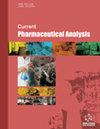维生素 A 和 D 制剂中元素杂质综合风险评估的通用方法
IF 1.5
4区 医学
Q4 PHARMACOLOGY & PHARMACY
引用次数: 0
摘要
背景:儿童维生素 A 和 D 缺乏是一个常见的公共卫生问题。在中国,几乎所有儿童每天都要长期服用维生素 A 和 D 制剂。儿童对重金属等元素杂质非常敏感。然而,目前还没有关于市售维生素 A 和 D 制剂中元素杂质风险评估的法规要求或报告。研究目的本研究旨在根据 ICH Q3D 指南,提出一种适用于不同生产商样品的准确、高效的元素杂质检测方法,并进行风险评估。方法:我们开发了一种普遍适用的胶囊消化方法和一种 ICP-MS 方法,用于定量分析维生素 A 和 D 配方中的 28 种元素杂质。这些方法根据 USP 233 准则进行了验证。测定了 10 家制造商生产的 15 批维生素 A 和 D 产品及其胶囊壳中的元素杂质,并根据国际协调理事会 Q3D 准则进行了风险评估。结果显示所有引起毒理学关注的元素杂质均符合 Q3D 要求。不过,各种元素的浓度差异明显,包括铅(未检出至 4.1 微克/克)、砷(未检出至 7 微克/克)、铝(未检出至 888 微克/克)和钯(未检出至 36 微克/克)。此外,一家制造商生产的一批产品中的铅含量超过了控制阈值。结论在这项研究中,我们成功地开发了一种有效的消化方法来处理含有不同来源样品的胶囊,并开发了一种灵敏的 ICP-MS 方法来定量测定维生素 A 和维生素 D 制剂中的 28 种元素杂质。ICP-MS 应用于维生素 A 和 D 制剂中元素杂质的评估和控制。这将确保儿童长期安全地补充维生素 A 和 D。本文章由计算机程序翻译,如有差异,请以英文原文为准。
Universally Applicable Methods for Comprehensive Risk Assessment of Elemental Impurities in Vitamin A and D Preparations
Background: Vitamin A and D deficiency in children is a common public health problem. In China, almost all children are administered vitamin A and D preparations daily and over the long term. Children are sensitive to elemental impurities, including heavy metals. However, there are no regulatory requirements or reports on the risk assessment of elemental impurities in marketed vitamin A and D preparations. Objective: The aim of this study was to propose an accurate and efficient method suitable for samples from different manufacturers to detect elemental impurities and conduct risk assessments according to the ICH Q3D guidelines. Methods: We developed a universally applicable digestion method for capsules and an ICP–MS method for quantitative analysis of 28 elemental impurities in vitamin A and D formulations. These methods were validated according to the USP 233 guidelines. Elemental impurities in 15 batches of vitamin A and D products from 10 manufacturers and their capsule shells were determined, and risk assessment was conducted according to the International Council for Harmonization Q3D guidelines. Results: All elemental impurities of toxicological concern met the Q3D requirements. However, the concentrations of various elements, including those of lead (not detected to 4.1 µg/g), arsenic (not detected to 7 µg/g), aluminum (not detected to 888 µg/g), and palladium (not detected to 36 µg/g), varied markedly. Moreover, the lead content in one batch from one manufacturer exceeded the control threshold. Conclusion: In this study, we successfully developed an effective digestion method for processing capsules containing samples from different sources and a sensitive ICP–MS method for quantitative determination of 28 elemental impurities in vitamin A and D preparations. ICP–MS should be implemented for the evaluation and control of elemental impurities in vitamin A and D preparations. This will ensure safe long-term vitamin A and D supplementation in children
求助全文
通过发布文献求助,成功后即可免费获取论文全文。
去求助
来源期刊
CiteScore
1.50
自引率
0.00%
发文量
85
审稿时长
3 months
期刊介绍:
Aims & Scope
Current Pharmaceutical Analysis publishes expert reviews and original research articles on all the most recent advances in pharmaceutical and biomedical analysis. All aspects of the field are represented including drug analysis, analytical methodology and instrumentation. The journal is essential to all involved in pharmaceutical, biochemical and clinical analysis.

 求助内容:
求助内容: 应助结果提醒方式:
应助结果提醒方式:


